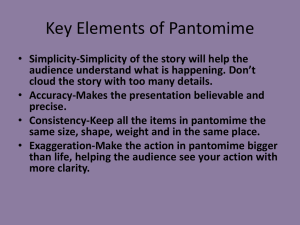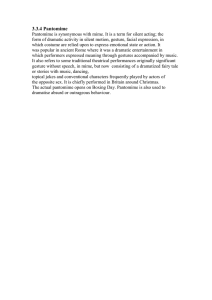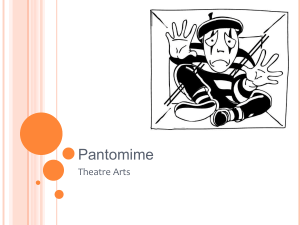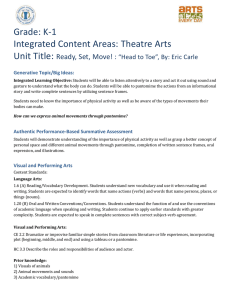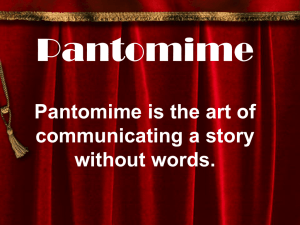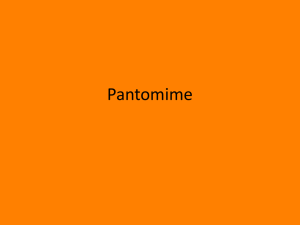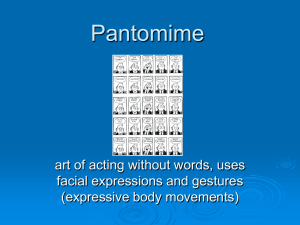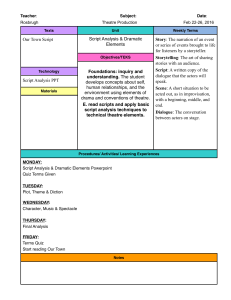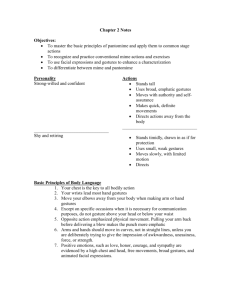Pantomime
advertisement
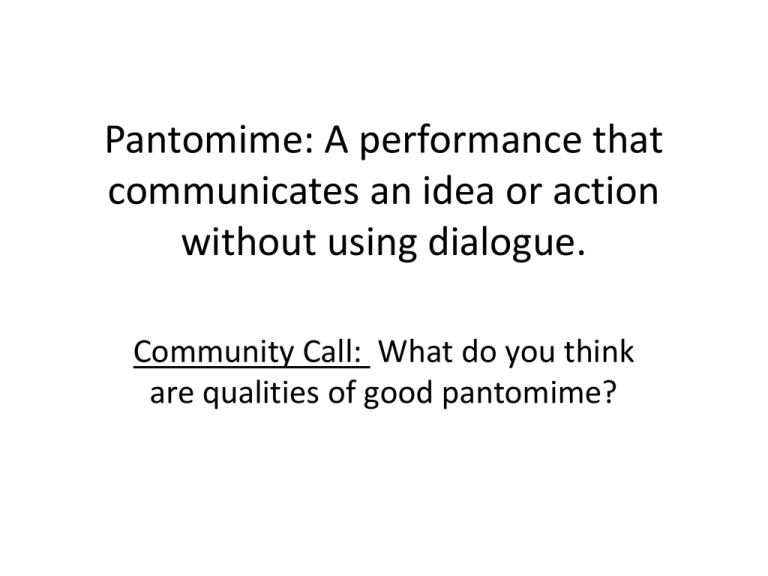
Pantomime: A performance that communicates an idea or action without using dialogue. Community Call: What do you think are qualities of good pantomime? Pantomime Notes Sections 1. What is Pantomime? 2. Three Basic Qualities of Good Pantomime 3. Three Basics of Pantomime Story Lines What is Pantomime? • Communicating an idea, character, or story without speaking • Ranks as the most difficult, time-consuming, and technically complicated aspects of theatre • Visibility, gesture, expression, concentration, and energy are vital to pantomime Basic Qualities of Good Pantomime Even with much training or time, you can emphasize three qualities necessary to effective pantomime: 1. Consistency: Objects that are mimed must remain the same size. 2. Exaggerated Resistance: If a mime pushes against something, pulls something, etc. the resistance of person against object must be exaggerated and made “bigger” than in real life. 3. Exaggerated Expression and Gesture: If a mime points to someone, cries, laughs, becomes angry or sad, etc. the facial expressions and gestures used must be exaggerated, or made bigger, than in real life. Basics of Pantomime Story Lines Your pantomimes must eventually tell a story and hold audience interest. Some suggestions for doing this are: 1. Keep it Simple: The storyline must be simple if the audience is to understand. A complicated story plot runs the risk of losing the audience somewhere along the way. 2. Tell a Story: In making up a storyline, actors think in terms of an initial situation (beginning), problem or complication arising in the situation (middle), and a solution to those problems (ending). 3. Be fantastic!: In pantomime, problems and solutions can be less realistic, more creative, and more fantastic than those in real life or realistic improvisation with dialogue Remember… An interesting scene can develop from almost any initial situation, depending on the creativity of the actors. And creativity is something, for most people, that has to be practiced. LET’S WARMUP!!!!!!!
